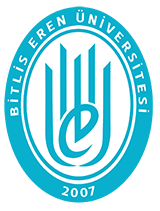| dc.description.abstract | In this research, a new axial phthalocyanine complex compound was synthesized. This study involved the synthesis of the novel silicon phthalocyanine prepared by reacting SiPcCl2, 9-phenyl-9H-xanthen-9-ol and K2CO3 in dry toluene. The novel silicon phthalocyanine was characterized by using different spectroscopic techniques including 1H NMR, UV-Visible, FT-IR and mass spectroscopy. The electronic properties of the compound for example the aggregation and solubility parameters investigated. Aggregation is a crucial parameter dictating the functional performance of phthalocyanines. Aggregation is closely related to temperature, concentration, type of ligand attached to the phthalocyanine ring, substituents attached to peripheral positions and polarity of the solvent. Ligands attached to the phthalocyanine ring disrupt the planarity of the ring, resulting in reduced aggregation. For these reasons, in this study, we focused on the aggregation characteristics of phthalocyanines and how axial ligand modifications regulate this behavior. Axial ligand (especially those with metals like Si, Ge, Sn) coordination increases steric bulk and reduces stacking. The low aggregation tendency of phthalocyanines provides significant advantages, especially in photodynamic therapy (PDT), optoelectronics and sensor applications. Photodynamic therapy (PDT) is a light based therapeutic modality that requires the coordinated presence of three key components: a photosensitizer (PS), a light source, and molecular oxygen. Phthalocyanine based photosensitizers (Pcs) are among the most promising candidates for photodynamic therapy (PDT) due to their favorable photophysical and photochemical properties. An ideal photosensitizer should exhibit strong absorption (600–800 nm), where tissue penetration of light is optimal. Phthalocyanines meet this criterion through their intense Q band absorption, usually around 670–700 nm. Moreover, they are capable of efficiently generating singlet oxygen (ΦΔ), a key cytotoxic agent in PDT. In addition to their photodynamic efficiency, phthalocyanines demonstrate excellent chemical and photostability.
Preliminary research was conducted for photosensitizer properties of the compound. After researches, the results have showed that singlet oxygen quantum yield has increased in the photodynamic study (ΦΔ=0.19) compare to the Std-SiPc (Φ∆= 0.15) | tr_TR |














